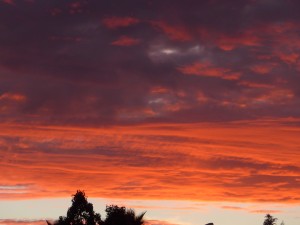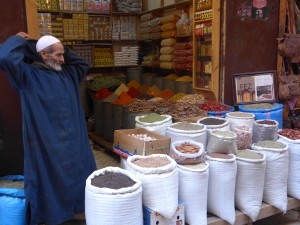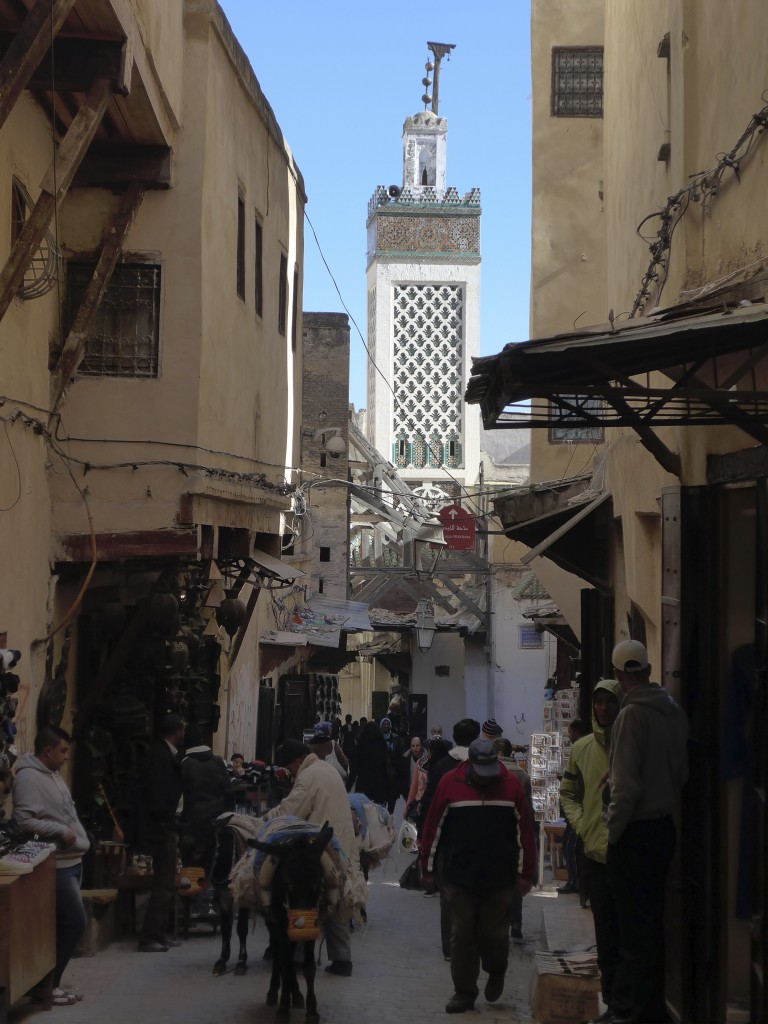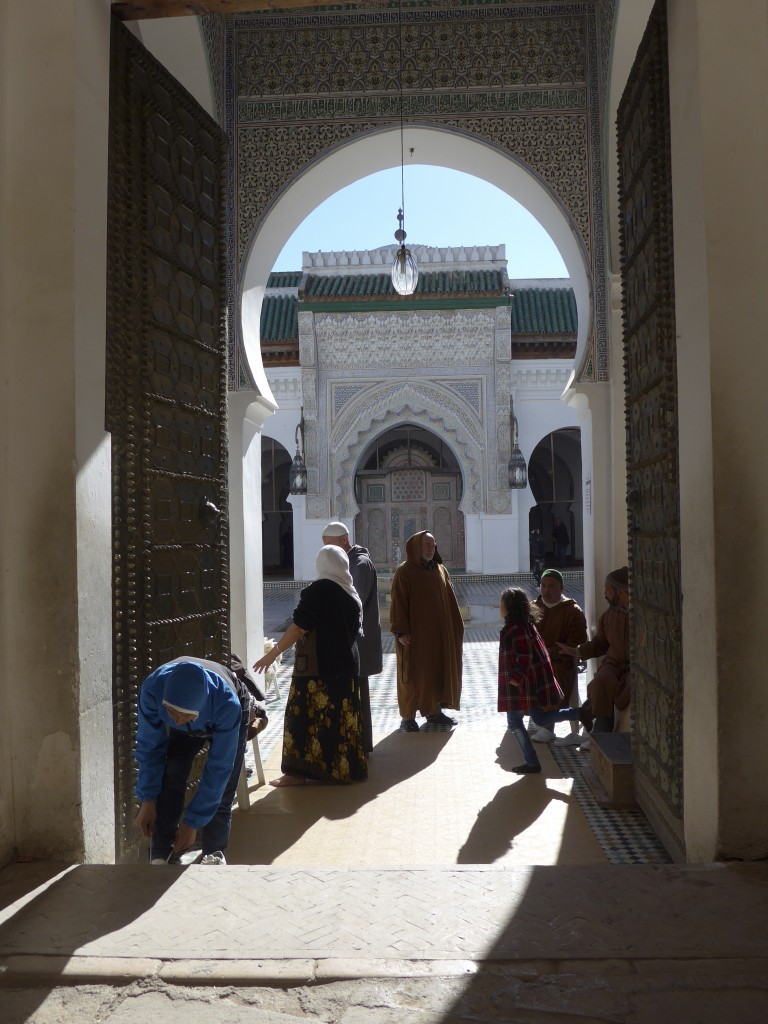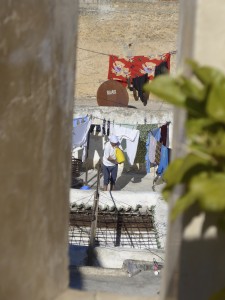One of the wonderful things about living in Ifrane is how easy it is to drop into Fez for the day. The road down the mountain is often slow and crowded, but on our way we like to pass the stored onions
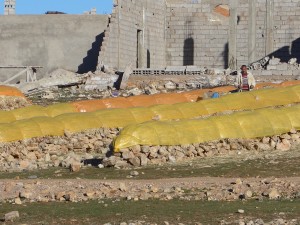
and the drying olives of early December.

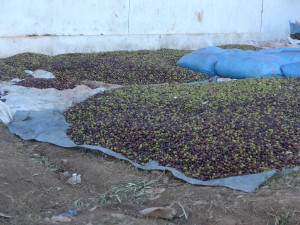
Roughly an hour later, we’ve arrived. One of these days, I’m going to go around the city and visit each one of the many many gates. But today, we’re just starting off at Bab Boujeloud:
 .
.
Yes, that’s close to the camel meat souk. Friends tell me camel meat is really quite tasty.
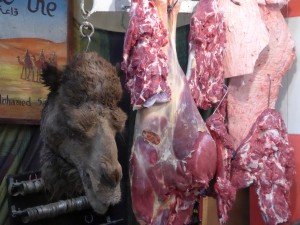
But I’d rather ride a camel than eat one, personally.
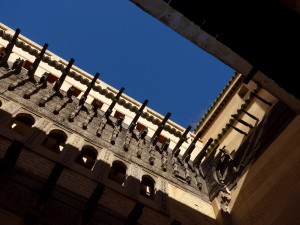
Someday, I’d like to learn more about how the waterclock by the Bou Inania was supposed to work, but today, we drift on past, focused on colors and scents (and grabbing a bag of pricey almonds to nibble as we go).
Today’s great treat is the honey souq, with over a dozen varieties of honey: some of our favorites were lavendar, rosemary, and thyme. Carob honey is supposed to lower cholesterol, forb honey (from the cactus that looks like little fingers) is supposed to be good for the lungs. There’s jasmine, date, fig, cedar, even cumin honey.
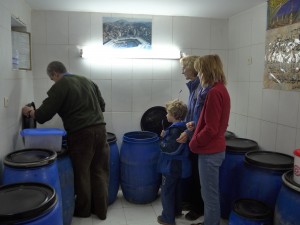
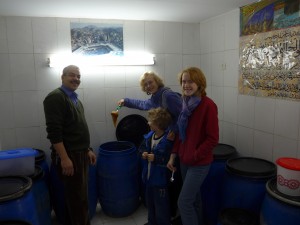
Our chosen honeys are weighed and packaged for us. Note all the different colors of honey.
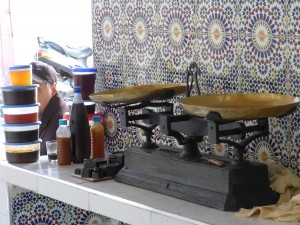
Our (new) friend is named Nouredine or “the light of faith;” he has a family tree stretching from Adam to Mohammed above the door to the honey storeroom. 
(Special figures appear as green rounds on a date palm: Adam, Idriss (?), Noah, Abraham (with offshoots of Isaac, Israel, etc.), up to Mohammed. Nouredine is a wholesaler: he works with a number of other men who purchase honey from different sources around the country. Mostly, he sells to bakers who might use the honey to create a particular kind of wedding cake or other sweet treat. His honey is carefully monitored by the state: he has to have it tested to confirm the purity, in contrast to the sugar water sold as honey by the roadsides on the way to Ifrane and elsewhere.
Powered by a massive honey buzz, we continue down the Talaa Kbira, the main street of the old medina. James particularly likes this view of the Qaraouyine minaret:
I think it’s the combination of the soaring minaret, the building supports below, and the donkeys on the ground.
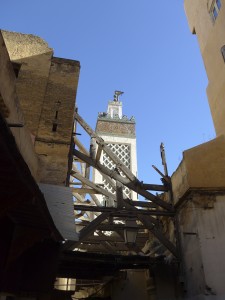
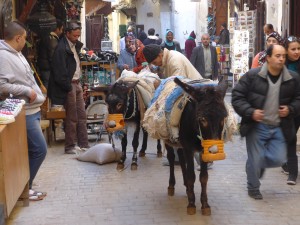
We also like the fact that so many of the Fez mosques are still such active spaces, so much a part of the community:
Nearby, a woman carries bread to be baked at a public bakery:
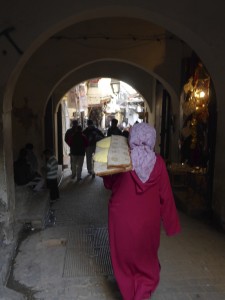
And djellaba makers are busy braiding trim:
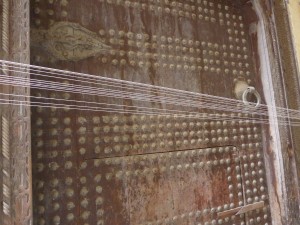
In his workshop, a little off the beaten track, a man is painting a door in the time-honored traditions of zouaq, but with bright modern paints:
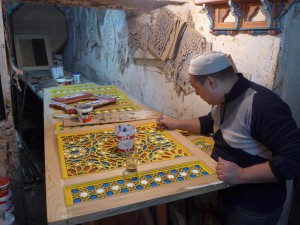
 In Morocco, of course, a teapot is never very far away.
In Morocco, of course, a teapot is never very far away.
In the Seffarine square, brassmakers are polishing their wares
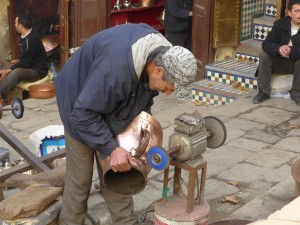
while another man peddles poultry. Chicken for dinner, anyone?
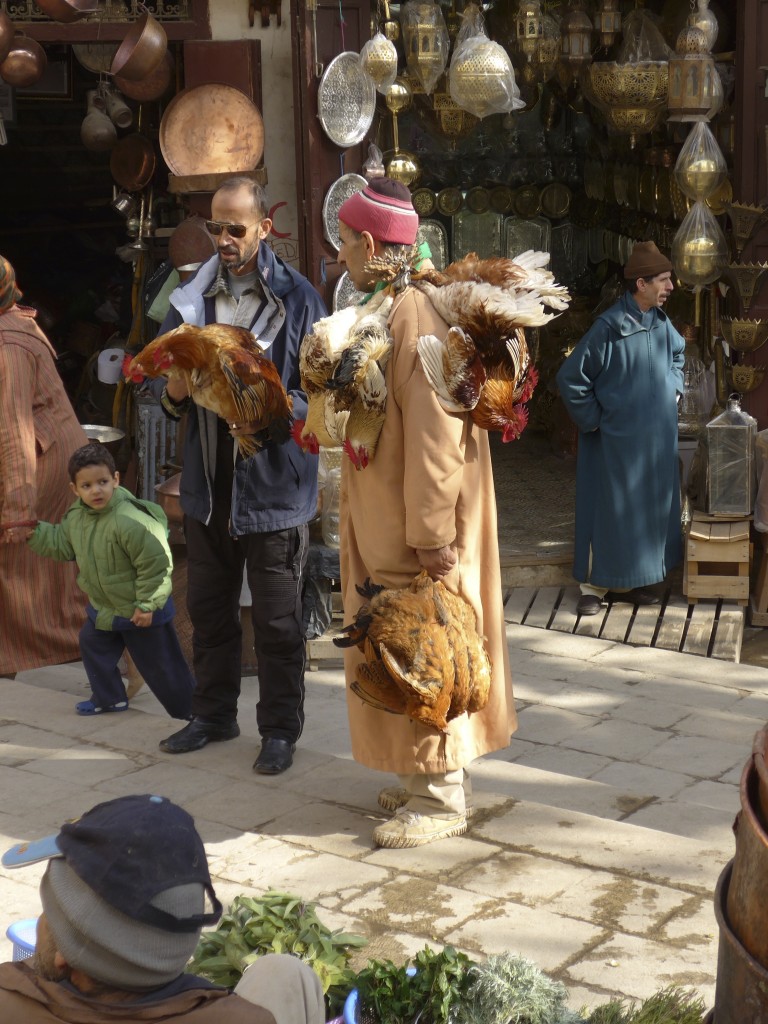
After lunch at a small family restaurant, we visit the Nejjarine fundouq, with its fabulous collection of craft artifacts (no photos permitted), and we climb to the rooftop café for a view down into the street,
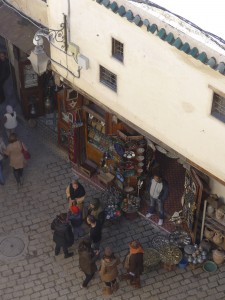
across the domed roof of a local bakery/hammam (the two neighborhood institutions are usually built together to share their heating),

and finally over the hills to the Merenid tombs:
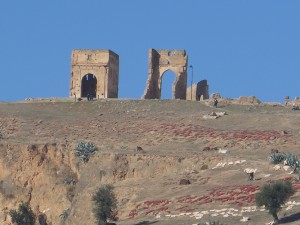
And then it’s time to be on our way home to the Ifrani sunset.
